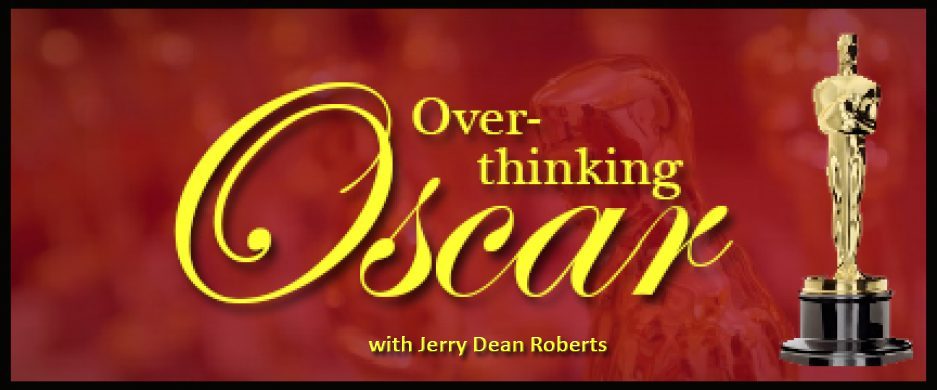The Nominees are . . .
• The Boy, The Mole, The Fox and the Horse, Charlie Mackesy and Matthew Freud, producers
• The Flying Sailor, Amanda Forbis & Wendy Tilby, producers
• Ice Merchants, João Gonzalez and Bruno Caetano, producers
• My Year of Dicks, Sara Gunnarsdóttir and Pamela Ribon, producers
• An Ostrich Told Me the World is Fake and I Think I Believe It, Lachlan Pendragon, producers
Once upon a time, Oscar’s nominees for Best Animated Short film remained bound up behind the locked gates of film festivals. Today, thanks to streaming platforms like Netflix and internet outlets like ShortsTV, regular folks (like you and me) have a chance to actually see these films before the big night, though finding them is something of a hunt.
What is refreshing, watching the five nominated films this year, is how refreshingly adult they seem. Outside of The Boy, The Mole, The Fox and the Horse, the subject matter seems to reign in a more mature sensibility. Chief among them is My Year of Dicks, a title that drew snickers and raised eyebrows on the morning announcement of the nominees, particularly from presenter Riz Ahmed. There’s also beautiful work dealing with climate change, a near-death experience, the search for a home and an existential awakening. Let’s look at them individually.
The Boy, The Mole, The Fox and the Horse from AppleTV+ is certainly the year’s most beautifully-made among the nominees. Based on a 2018 best-selling children’s book by Charlie Mackesy and produced with the help of J.J. Abrams Bad Robot Productions, it follows the adventures of a little boy lost in a snow-blanketed forest who bonds with first a very chatty mole (v. Tom Hollander) then a sneaky-eyed fox (v. Idris Elba) and then a white horse (v. Gabriel Byrne) whose third-act revelation is kind of majestic. Mackesy’s journey to this film began when he was posting his sketched illustrations on Instagram about conversations between the boy, the mole, the fox and the horse. The book became a massive best-seller and followed with several producers attempting to adapt it for film until it fell into the hands of Cara Speller, who collaborated with Matthew Freud in producing the film under their NoneMore Productions banner. It became their first production
The Flying Sailor is exactly what you expect if you’re familiar with the odd world of animated shorts from Canada. Let’s just say, they have a flavor all their own (and are often very free with nudity). Directed by Amanda Forbis and four-time AS nominee Wendy Tilby, it involves a sailor who is present during the 1917 explosion of a French cargo ship in Halifax, Nova Scotia and goes on a flying existential journey in which he sees his life literally flashing before his eyes. The winner the Best Canadian Film at the Ottawa International Animation Festival, it is the shortest of the nominees, if not the most compelling. And, at just 8-minutes, it is the shortest.
Ice Merchants was the first Portuguese animated film ever to win a prize (The Leitz Cine Discovery Prize) at the Cannes Film Festival. And among this year’s nominees, it might be the most visually striking. It tells the story of a father and son who live in a house on the side of a icebound cliff and, every day, jump down to the village by parachute to sell ice. Sadly, climate change comes into play and they are forced to rethink their line of work. Told without dialogue and with an abstract palette, the film stays in your mind, not just due to its images but in it’s message as well. I think those textures and that message may lead to a victory on Oscar night.
My Year of Dicks may not be the most striking of this year’s nominees but its title certainly raises eyebrows. It is an autobiographical period serio-comedy, based on the true experiences of Pamela Ribon (who went on to write Moana) it uses a lot of different styles of animation mixed with some crummy old VHS footage to tell – in five chapters – the story of a young teenage girl’s journey to lose her virginity and the various loser boyfriends that she considers candidates. Set in the poppy world of 1991 and including elements of the era (including a clip of Henry and June), the movie is a scrapbook of what a hormonal young girl goes through when trying to assess her sexuality. This is the most grounded among the nominees in a field overloaded with flights of fancy
An Ostrich Told Me the World is Fake and I Think I Believe It is a stop-motion animated film from Australia that kind of picks up where The LEGO Movie leaves off as a schlubby office worker slowly begins to realize that he might actually be living in a stop-motion animated world – information given him by a talking ostrich. It is hard to say that this would be the winner or even the runner-up, but this is certainly the most fun among these nominees.
The Winner: Ice Merchants
The Runner-Up: My Year of Dicks











